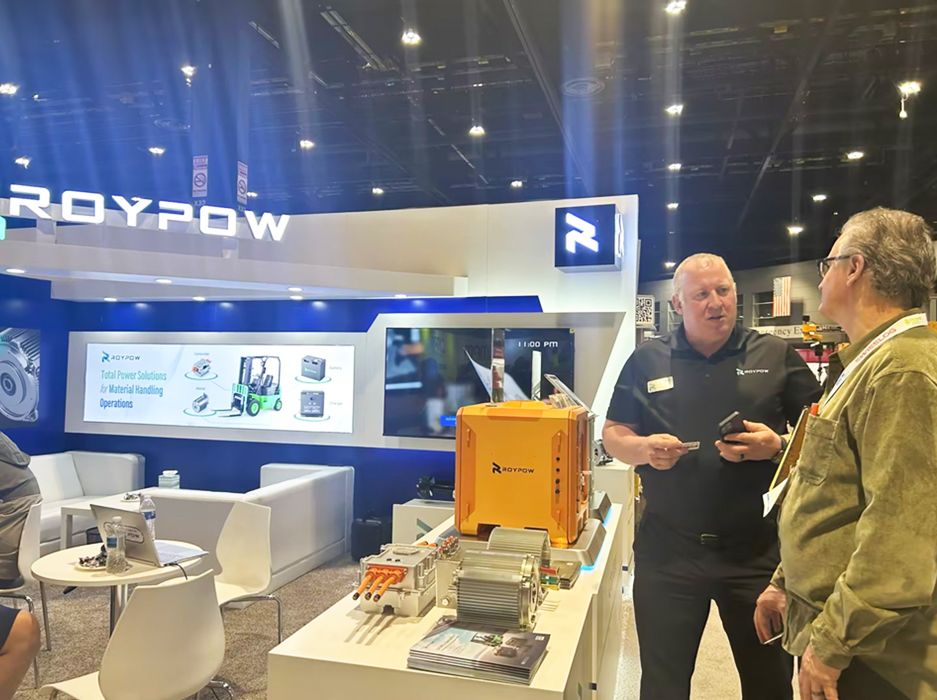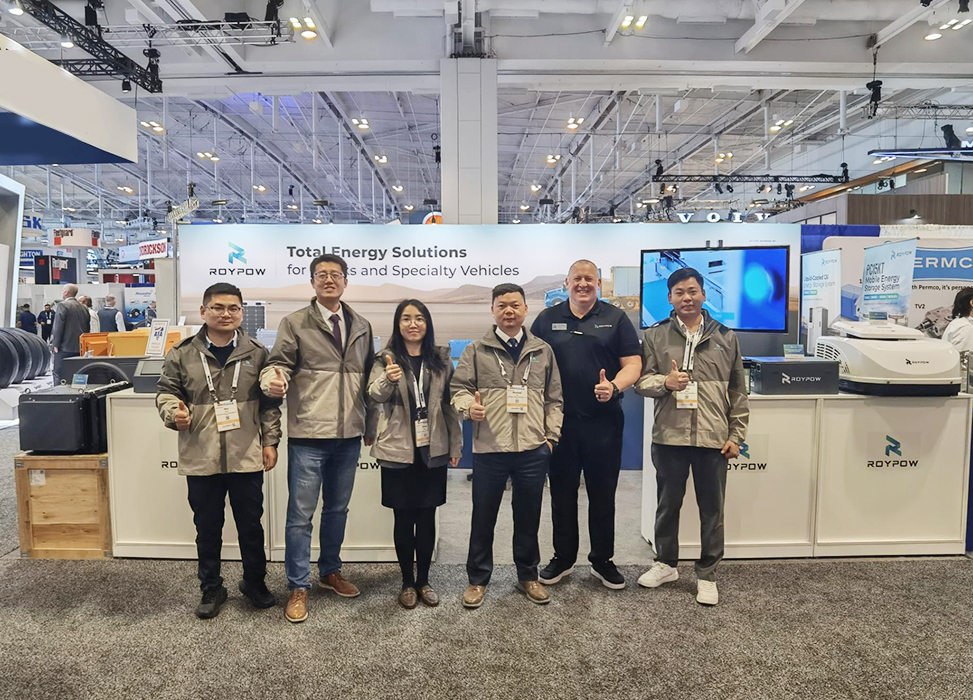Why Choose ROYPOW C&I Energy Storage Systems
Commercial & Industrial Energy Storage Systems


Diesel Generator ESS Solution X250KT
▪ Energy Saving: Maintain the DG operating at the lowest fuel consumption rate,achieving more than 30% fuel savings.
▪ Lower Costs: Eliminate the need for investing in a higher-power DG and reduce the maintenance cost by extending the lifespan of a DG.
▪ Scalability: Up to 4 sets in parallel to reach 1 MW/614.4 kWh
▪ AC-Coupling: Connect to PV, grid, or DG for enhanced system efficiency and reliability.
▪ Strong Load Capacity: Support impact and inductive loads.



Mobile Energy Storage System PC15KT
▪ Plug-and-Play Design: Preinstalled all-in-one design.
▪ Flexible and Fast Charging: Charge from PV, generators, solar panels. <2 hours of fast charging.
▪ Safe and Reliable: Vibration-resistant inverter and batteries & fire extinguishing system.
▪ Scalability: Up to 6 units in parallel to reach 90kW/180kWh.
▪ Supports three-phase and single-phase power output and charging.
▪ Generator Connection with Automatic Charging: Auto-start the generator when undercharged and stop it when charged.



Air-Cooled Energy Storage System CS3060
▪ Efficient Air-cooling Technology: Less temperature difference & extended battery life.
▪ Ultimate Safety: Battery-level and cabinet-level fire suppression, flammable gas emission.
▪ Powerful Inverter Integrated: Scalable up to 180kW, 100% unbalanced load backup, 110% continuous AC overload, remote DG control, and multiple MPPT inputs.
▪ Plug-and-Play: All-in-one, highly integrated design without complex installation.
▪ Connect to Diesel Generators: Compatible with max. 30kVA models; fuel saving.
▪ Intelligent Management: Support remote performance and status monitoring.

Applications of ROYPOW
Commercial & Industrial Energy Storage
-
1. What is a Commercial & Industrial energy storage system?
+A Commercial & Industrial energy storage system is a solution that helps businesses manage energy costs, improve reliability, and integrate renewable energy sources. These systems store energy during off-peak hours and discharge it during peak demand, reducing electricity bills and providing backup power during outages. C&I energy storage is widely used in industries such as manufacturing, retail, data centers, and utilities. -
2. How does a Commercial & Industrial energy storage system work?
+A Commercial & Industrial energy storage system stores electricity in lithium-ion batteries during off-peak hours or from renewable sources like solar. The system is controlled by an Energy Management System (EMS), which optimizes when to charge and discharge based on energy demand and electricity rates. The stored energy is then released through an inverter, which converts the DC power from the battery into AC power for use by the facility. This helps businesses reduce costs by shifting loads and peak shaving during high-demand periods.
Additionally, the system provides backup power during outages and can integrate with renewable energy sources, such as solar, to maximize self-consumption. It can also offer grid support services like frequency regulation, stabilizing grid operations. In summary, C&I energy storage helps businesses lower costs, enhance energy resilience, and improve sustainability.
-
3. What are the benefits of a C&I energy storage system?
+The benefits are as follows:
Reduced energy costs: By storing electricity during off-peak hours and using it during periods of high electricity demand, businesses can significantly lower their electricity bills.
Increased energy independence: C&I energy storage systems give businesses greater control over their energy supply, reducing reliance on the grid and enhancing facility resilience and reliability.
Grid support: C&I energy storage systems enable businesses to participate in Demand Response Programs and shift electricity demand to times when electricity is more plentiful or other demand is lower. This helps stabilize the power grid.
Improved power quality: C&I energy storage systems can help reduce voltage fluctuations, frequency deviations, and other issues related to power quality, ensuring that facilities operate optimally.
Enhanced operation efficiency: C&I energy storage systems can help businesses manage and optimize their overall energy consumption by balancing demand across different periods. This not only lowers costs but also enhances the operational efficiency of the business.
Improved sustainability: By integrating renewable energy sources like solar, C&I energy storage systems enable businesses to reduce their carbon footprint and contribute to a greener future.
Regulatory compliance: In some regions, businesses are required to meet certain energy efficiency or emissions standards. C&I energy storage systems help them comply with these regulations by reducing their reliance on grid power and improving their energy management.
-
4. How much does a C&I energy storage system cost?
+The cost of a Commercial and Industrial (C&I) energy storage system can vary based on several factors, including:
System capacity and size: The larger the system’s energy storage capacity, the higher the cost. Higher power ratings often require more sophisticated infrastructure and larger batteries, which increase costs.
Energy storage type: There are lithium-ion, lead-acid, or flow batter types used for C&I energy storage. Lithium-ion batteries are the most common types and tend to be more expensive upfront but offer better efficiency and longer lifespans, which can make them more cost-effective in the long run.
Inverter and power conversion component: The type and capacity of the inverter can significantly impact system costs. The integration of energy management systems (EMS), which optimize the flow of electricity between the storage system, grid, and load, also adds to the cost.
Installation costs: Beyond the cost of the energy storage system itself, there are installation costs, which can include labor, permitting, electrical work, and integration with existing systems.
Grid integration: The costs associated with connecting the system to the grid or ensuring the system can operate as an independent unit can vary greatly depending on local utilities and grid infrastructure.
System features and complexity: C&I energy storage systems with advanced features may have a higher upfront cost. Custom solutions designed for specific business needs can also drive costs higher.
Maintenance and replacement costs: Some C&I energy storage systems require ongoing maintenance, and warranties typically range from 5 to 10 years. It’s important to consider these costs in the total cost of ownership over the system’s lifespan.
Considering these factors, a C&I energy storage system can range from tens of thousands to several hundred thousand dollars. The ideal choice will depend on the specific energy needs, budget, and expected return on investment.
-
5. What is the difference between a diesel generator energy storage system and a mobile energy storage system?
+ROYPOW C&I energy storage system solutions include diesel generator energy storage systems and mobile energy storage systems.
ROYPOW diesel generator energy storage system is specifically designed to work with diesel generator sets and enhance their energy efficiency. By intelligently maintaining overall operation at the most economical point, it achieves fuel consumption savings of over 50%. With a high power output, it’s built to withstand high inrush currents, frequent motor starts, and heavy load impacts. This reduces the frequency of maintenance, prolongs the diesel generator’s lifespan, and ultimately lowers the total costs of ownership.
ROYPOW mobile energy storage system is designed to fit small-scale scenarios. This system integrates advanced LFP batteries, inverter, intelligent EMS, and more into a compact 1m³ all-in-one, plug-and-play design, making it quick and convenient to deploy and easy to install and transport. Reliable, vibration-resistant design allows for frequent transportation without compromising performance.
-
6. What can the Commercial & Industrial energy storage system be used for?
+A Commercial & Industrial energy storage system can be used for various applications to improve energy efficiency, reduce costs, and enhance operational flexibility. Here are some of the applications:
Peak shaving and load shifting: Reduce energy costs by storing electricity during off-peak hours and discharging it during peak hours to avoid higher electricity rates.
Backup power and emergency supply: Provide reliable backup power during outages, ensuring operation continuity without relying on the grid or diesel generators.
Grid support: Provide services to the grid, such as frequency regulation and voltage control, helping maintain grid stability and reliability.
Microgrid applications: Enable microgrids by allowing off-grid operation, with energy storage providing power when the grid is unavailable or to reduce reliance on external power.
Energy arbitrage: Buy electricity at lower prices and sell it back to the grid during high-price periods, creating a profit for businesses with energy storage systems.
Energy resilience for critical infrastructure: Ensure energy resilience for facilities like hospitals, data centers, and factories that need continuous, uninterrupted power to maintain operations.

Join us as a customer or partner
Whether you're looking to optimize C&I energy management or expand your business, ROYPOW will be your perfect choice. Join us today to revolutionize your energy solutions, elevate your business, and drive innovation for a better future.
contact us
NEWS & BLOGS
Tips: For after-sales inquiry please submit your information here.
- English
- Chinese
- French
- German
- Portuguese
- Spanish
- Russian
- Japanese
- Korean
- Arabic
- Irish
- Greek
- Turkish
- Italian
- Danish
- Romanian
- Indonesian
- Czech
- Afrikaans
- Swedish
- Polish
- Basque
- Catalan
- Esperanto
- Hindi
- Lao
- Albanian
- Amharic
- Armenian
- Azerbaijani
- Belarusian
- Bengali
- Bosnian
- Bulgarian
- Cebuano
- Chichewa
- Corsican
- Croatian
- Dutch
- Estonian
- Filipino
- Finnish
- Frisian
- Galician
- Georgian
- Gujarati
- Haitian
- Hausa
- Hawaiian
- Hebrew
- Hmong
- Hungarian
- Icelandic
- Igbo
- Javanese
- Kannada
- Kazakh
- Khmer
- Kurdish
- Kyrgyz
- Latin
- Latvian
- Lithuanian
- Luxembou..
- Macedonian
- Malagasy
- Malay
- Malayalam
- Maltese
- Maori
- Marathi
- Mongolian
- Burmese
- Nepali
- Norwegian
- Pashto
- Persian
- Punjabi
- Serbian
- Sesotho
- Sinhala
- Slovak
- Slovenian
- Somali
- Samoan
- Scots Gaelic
- Shona
- Sindhi
- Sundanese
- Swahili
- Tajik
- Tamil
- Telugu
- Thai
- Ukrainian
- Urdu
- Uzbek
- Vietnamese
- Welsh
- Xhosa
- Yiddish
- Yoruba
- Zulu
- Kinyarwanda
- Tatar
- Oriya
- Turkmen
- Uyghur

























